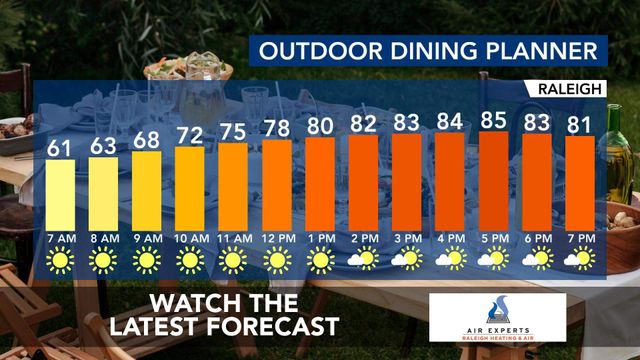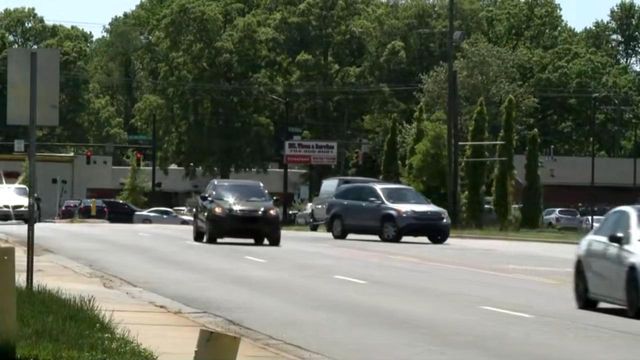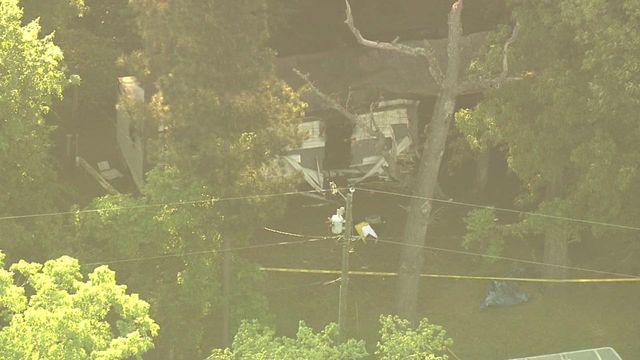Venus flytrap harvester Richard Jones thrives in face of plant's struggles

Richard Jones saw his first Venus Flytrap when an old man — well, maybe just old to 7- or 8-year-old Jones — was selling them in paper cups out of his tailgate in Holden Beach, N.C.
The plants were recently dug. Jones, a young, self-proclaimed “avocational naturalist” could tell.
He bought a few and took them home. Dead within weeks.
But, decades later, he decided to try again with the Flytraps — a plant native only to an 80-mile radius of Wilmington. He started to grow them in his backyard as a hobby.
When a friend was setting up a table to sell her crafts at a park in Oak Island in 2007, she invited Jones to sell some of his plants. By then, he’d gotten the hang of the soil mixture they needed, and they were surviving a whole lot longer than a few weeks.
A whole new world had opened for him.
Now, Jones’ yard — a crowded, pine straw-covered collection of wooden structures, beekeeping equipment and fence posts — is full of garden-like rows of potted Venus Flytraps. Line by line, plot by plot. Hundreds of the carnivorous plant, grouped to a couple in each pot.
Jones, 64, sells the plants at farmers’ markets during the warmer months, but he also speaks at local environmental groups’ meetings and gives tips and tricks to successfully growing Flytraps.
He likes the folks he meets at those meetings. They’re like him — as he says, “my kind of people.”

Jones was living in Oak Island in 2011, but he hated it. He was bothered to be around a bunch of other people all the time. He was bothered that he had to walk so far through his house to get to a refrigerator. He was bothered that it took money and effort to heat and cool the different rooms.
Jones had already decided he wasn’t going to work for anyone else after one of his contracts ended at a water and sewer plant, where he was a licensed system operator. He wanted to downsize and continue his Venus Flytrap business.
And so he did. He custom-built his own house in the woods several miles to the north.
The wood shake-sided house’s footprint is only about 200 square feet, but that’s exactly the way he likes it.
He has a furnace in his living room that heats the whole house — along with a TV, a recliner, and a bookshelf stuffed full with old reads with worn spines that stuck out to him over the years. A plank of wood sticks out from the third shelf. That’s where he puts his silver travel mug.
A picture of his long-time best friend, a “little brown girl dog” named Guthrie, sits on his mantle. The picture is no bigger than 4 inches across, but Guthrie’s death three months ago weighs heavily on him. Reminds him of the cruelty of life.
He got a new dog, Aberdeen, about seven weeks ago, from the county pound where he’s gotten all his pets.
Jones himself looks the part of a weathered Venus Flytrap farmer. His fingernails have dirt wedged beside them. He wears a round-brimmed beige hat every day. The rest of his dozen hats, some of which have been retired for holes and tears, sit on makeshift tobacco can hangers above his bed.
He still hangs on to a worn, gray teddy bear his granddaddy — whom he idolizes — gifted him when he was born. During his childhood, Jones would walk through a path in the woods to his grandparents’ house as often as he could.
His granddaddy also gave him his single favorite gift ever: a trap a young Jones used to catch, feed and release animals around the yard and in the woods.
He kept wild raccoons as pets, and he was fly fishing with ease in nearby farm ponds by the time he was 8 years old — around the time he saw his first Venus Flytrap. He bought his first car with his own $427 of tobacco money when he was 14. He’d built his own small fishing boat by the time he was 18.
_____
Jones is permitted to sell his beloved Venus Flytraps at markets and events using the state’s certificate of origin permit — signaling where the Venus Flytraps he sells came from.
Farm-raising plants from your own land, like Jones does, is entirely legal. There are no protections or restrictions for Venus Flytraps on private land, as long as the one taking the plant is the landowner or has written permission from the landowner.
Without the certificate of origin permit, though, selling Venus Flytraps is illegal in North Carolina. Not only is it native to an 80-mile radius of Wilmington — one of the plant’s main calling cards for Jones — it’s one of the state’s more than 400 protected plant species.
Illegally taking and selling Venus Flytraps is a Class H felony, punishable by up to 39 months in prison. Each plant taken illegally is a separate offense.
In 2019, a Brunswick County man, Archie Williams, was arrested and charged with 216 counts of stealing the plant. Williams was sentenced to two months in prison after cooperating and agreeing to replant the Flytraps.
His was the first high-profile case of catching a flytrap poacher after state law was changed in 2014 to increase the penalty.
Jones is averse to letting people know where he lives because, he said, a good poacher can make a lot of money in just one Saturday morning.
Fred Gorchess, a N.C. Wildlife Resources Commission officer, said the increased penalties for taking Venus Flytraps has deterred some, but that he still has to make arrests.
“The last guy I caught out here, I talked to him, and he was out here for under an hour — and I want to say he had 400 or 500 of them in under an hour,” Gorchess said.
Poachers are not the only threat to Venus Flytrap survival, though. Johnny Randall, the retired director of conservation programs at the North Carolina Botanical Garden, said development for golf courses, shopping centers, roads and the like is the single biggest danger to the plant.
The state has a permit for developers and volunteers to move the Flytraps from the path of construction and plant them elsewhere. But, N.C. Department of Agriculture Plant Conservation Research Specialist Katherine Culatta said only 17 of those protected plant permits were issued in the 2023 fiscal year. Two were for Venus Flytraps.
Randall is also concerned about private landowners — even those who are permitted — taking unhealthy amounts of whole Flytraps from their land.
As recently as 2023, the Flytrap was not listed by the U.S. Fish and Wildlife Service as endangered or threatened — but populations are still dwindling. Randall said removing individual plants from the environment is likely detrimental to the species in the long term.
“If you go into a population where there’s 100 plants and you take 90 of them, that is very serious,” Randall said. “Go into a population that has 10,000 and you take 90, that’s not going to be damaging to the species in terms of its long-term survivorship, but it’s still not a good thing, especially if they’re being poached.”
He said, instead, harvesters should focus on propagating the plant — or taking a part of the plant to grow it somewhere else while leaving the original alive and in its original habitat.
That’s how Jones runs his farm — as sustainably as he can. The plants, Jones said, are relatively easy to maintain, as long as the acidity in the soil is right. Flytraps are adapted to grow in the nutrient-poor sandy dirt of the North Carolina coastal plain, so fertilization kills them.
He reuses whatever he can around his house. And he even built his house out of mostly recycled materials.
“There’s a philosophical imperative to this,” Jones said.
Jones leans into the history of the plant and the people around it — from its discovery by Tuscarorans to its first appearance in writing in the mid-18th century by North Carolina Colonial Governor Sir Arthur Dobbs.
Even Thomas Jefferson had a hand in the plant: He got his first Flytrap in 1787.
But, like Jones’ first try back when he was 7 or 8 years old, Jefferson’s were dead soon afterwards.
“He should’ve called,” Jones said. “I would’ve helped.”









